Audio
The latest Audio breaking news, comment, reviews and features from the experts at T3
Explore Audio
-

Klipsch upgrades its powered speakers with Dolby Atmos and HDMI eARC
The brand is marking 80 years in style, with more immersive audio
By Sam Cross Published
-

These elite earphones are IMAX Enhanced for stunning soundtracks
The Zohn-1 wireless buds are the first to come with IMAX certification
By Carrie Marshall Published
-

These crazy new headphones turn into a wireless speaker – and cost less than you might think
The TDM Neo makes a lot of sense for cash-strapped music lovers
By Sam Cross Published
-

Android-powered and audiophile-standard, FiiO's latest music player is an iPod for a new generation
The M33 R2R is the premium audio player I've been waiting for
By Luke Edwards Published
-

I tried Cambridge's new L/R X speaker, now my Bowers is on borrowed time
Cambridge's L/R X is an absolutely storming integrated speaker setup
By Mike Lowe Published
-
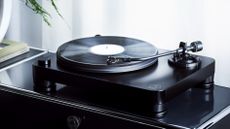
New Audio-Technica turntable is an exercise in timeless minimalism
The Audio-Technica AT-LP7X offers killer specs in a gorgeous package
By Sam Cross Published
-
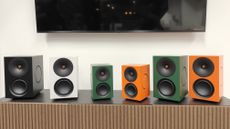
British audio legend reveals Sonos-slapping colourful new speaker range
Cambridge Audio's L/R – available in 'S', 'M' and 'X' – is a very compelling new powered speaker line-up
By Mike Lowe Published
-

JBL's coolest new earbuds are designed with fashion at their forefront
The JBL Soundgear Clips are designed to look good while you're listening to music
By Sam Cross Published
-

Pioneer head unit brings Dolby Atmos and spatial audio to your car
Pioneer Sphera is the first aftermarket model to offer the tech and promises Dolby Atmos even from simple, four-speaker systems
By Alistair Charlton Published
-

Fender finally joins the headphones party – Mix wireless over-ears take on Sony, Bose and Marshall
The Fender Mix even includes one of my favourite things about Fender guitars
By Sam Cross Published
-

Pro-Ject's latest turntable is a step-up model for those who want to treat their records more seriously
Newly designed upgrades make this an audiophile's delight
By Luke Edwards Published
-
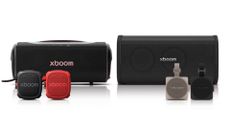
LG's new Xboom speakers take on Sonos, Sony and Bose all at once
The speaker market is crazy right now
By Max Freeman-Mills Published
-

Best wired headphones 2026: Perfect picks for every price point
Only the best wired headphones feature here – no wireless picks
By Mike Lowe Last updated
-

Best headphones for travel 2026: Ideal headphones for long journeys
Headphones for travel and commuting, reviewed and rated
By Mike Lowe Last updated
-

Best noise-cancelling headphones 2026: ANC from Bose, Sony, Apple, more
Ideal ANC headphones for every budget
By David Nield Last updated
-

Best headphones 2026: Reviewed and rated by team of experts
Buying Guide T3's expert guide to the best headphones available
By Mike Lowe Last updated
Buying Guide -

Best earbuds 2026: Only the best in-ear buys of the year
Best from Sony, Apple, Bose and more
By David Nield Last updated
-

Best soundbar 2026: Our TV experts pick the best options for all budgets
Enhance your TV's output with one of the best soundbars or surround sound products
By Mike Lowe Last updated
-
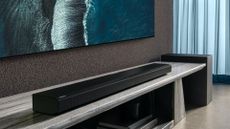
Best soundbars for Samsung TVs 2026: Enhance your Samsung TV's sound
Sound-boosting audio that will boost your Samsung TV's sound
By Mike Lowe Last updated
-

Best soundbars for LG TVs 2026: Expert picks to upgrade your LG TV's sound
Your LG TVs can benefit from particular soundbar pairings – here's what's best, curated by our sound and TV experts
By Mike Lowe Last updated
-
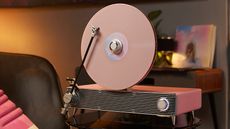
Bonkers and beautiful: this is surely the most stunning way to play your vinyl records
Imagine how great it would look in the corner of your living room
By Britta O'Boyle Published
-
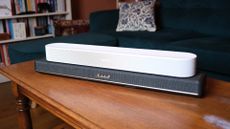
My Christmas confirmed one huge thing about soundbars – it was no surprise
We all absolutely need one
By Max Freeman-Mills Published
-

It looks like an iPod, works like an iPod, but don't expect iPod prices – it's cheaper
Significantly cheaper that Apple's last iPod, in fact
By Britta O'Boyle Published
-

Samsung’s new elite Wi-Fi speakers are something spatial
Can be used standalone or part of a Q-Symphony setup with your Samsung TV
By Carrie Marshall Published
-

IKEA's new retro-style speaker is '5-star' rated – and very affordable
It's certainly 'NATTBAD', it's very good indeed!
By Mike Lowe Published
-

This vinyl deck is also a CD player – with a cunning, hidden transport inside
This is what you get when the CD resurgence clashes with the vinyl revolution
By Chris Hall Published
-

This elite CD player is a top-class transport of delight
Shanling unveils its most advanced CD transport yet with dedicated upsampling to make your discs sound better
By Carrie Marshall Published
-
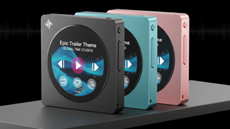
FiiO's CD quality digital audio player invokes the spirit of iPod nano for an unbelievable price
This may be its most attractive audio player yet – including its cost
By Carrie Marshall Published
-

Want a new Bluetooth speaker for Christmas? The 3 best for all budgets
Festive fun for your ears – at budget, middle and luxury price points
By Mike Lowe Published
